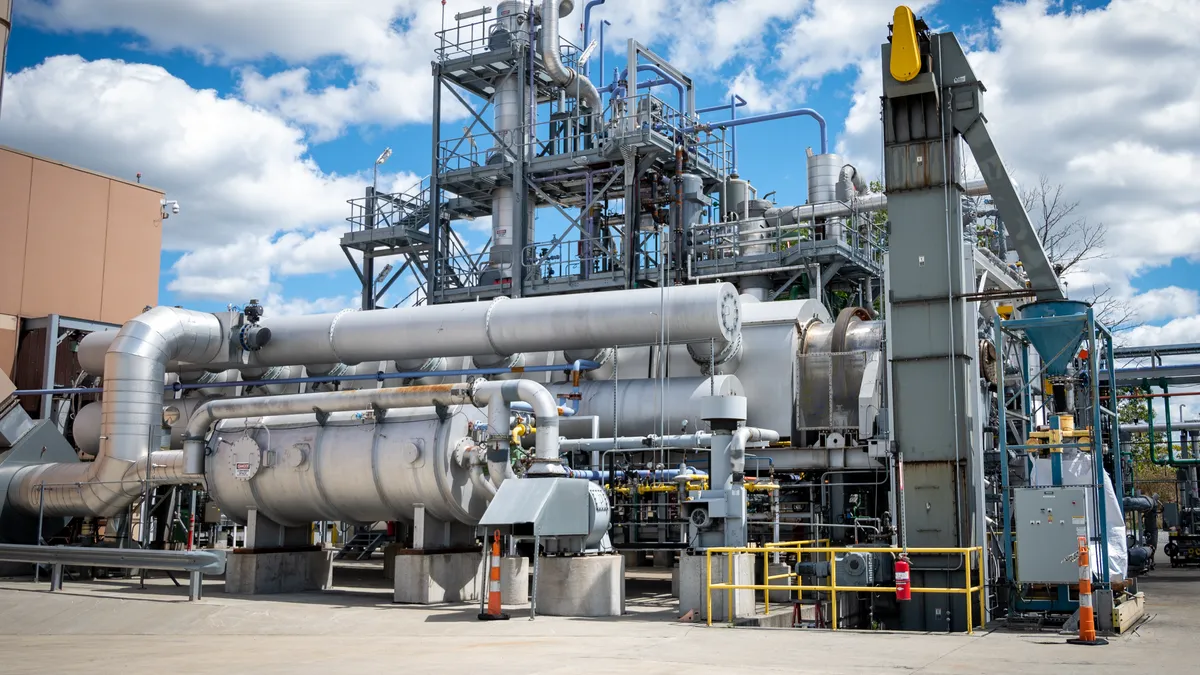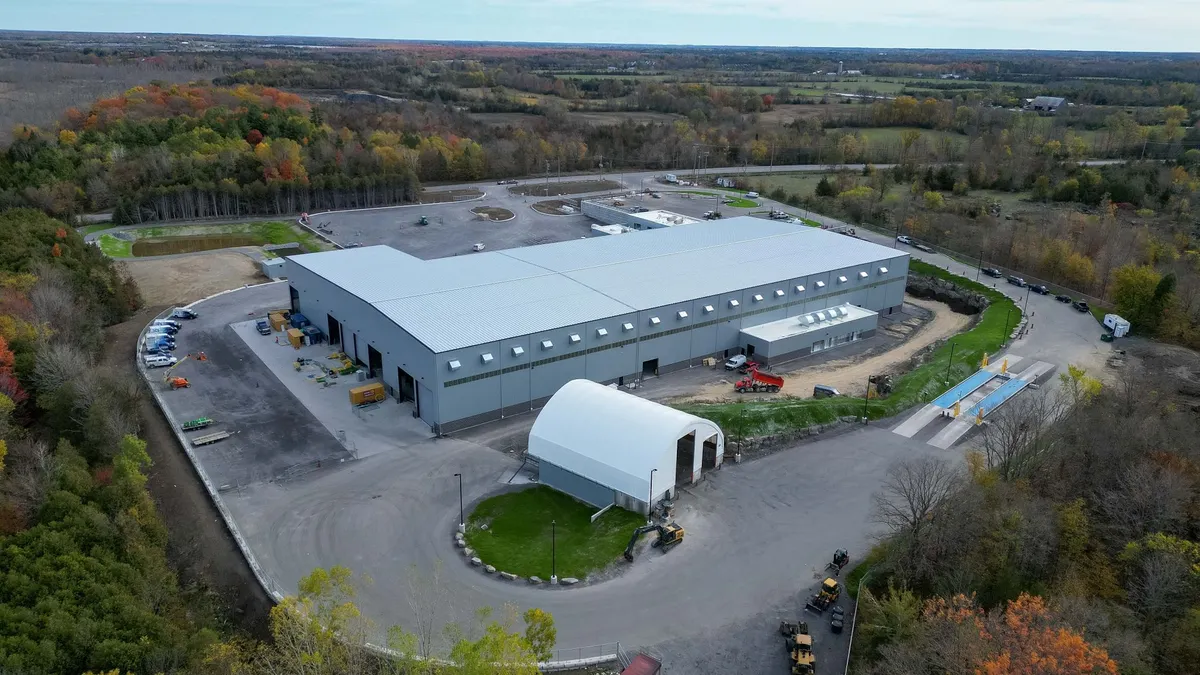Perhaps even more than China, glass recycling is the one thing everyone wants to talk about in Northeast circles this year. During those difficult conversations about what can be done to make it economically viable, one name is getting mentioned more and more – Pace Glass.
The New Jersey glass processor, which was taken over by the New York-based Valiotis family and business partner Michael Mahoney in 2013, currently has one facility in Jersey City and is set to open a new one in Andover, New Jersey next year. Pace plans to spend an estimated $90 million on that new operation, which has been touted as the largest of its kind in the world. Once fully operational, the plant is expected to process anywhere from 550,000 to 750,000 tons per year.
Between this and the fact that Pace's Jersey City plant has been back online in upgraded form since 2016, CEO George Valiotis is tired of the narrative that glass recycling is broken. As municipalities are faced with contract renegotiations due to broader changes in the recycling market, he urges them to keep glass in the mix.
"We are processing some of the dirtiest MRF glass in this country and our operation’s only getting more sophisticated, more automated, and we have the process down pat," said Valiotis in an interview with Waste Dive. "We will be expanding very soon and we will be able to take in everyone’s material. We will have the capacity to take in the entire Northeast."
If that does indeed come to pass, there are thousands of tons throughout the region waiting to be moved for the right price. If that goes well, and if Pace's plans for a big new international partnership come to pass, that footprint could grow significantly larger in the years ahead.
Northeast glass crisis
Long before anyone had heard the term "National Sword," glass was already a common complaint for recyclers around the country. When broken during collection the material can wear down equipment, lower the value of fiber in single-stream systems and prove challenging to pull through MRFs in a clean way.
As a result, many service providers have been looking for ways to either drop glass from programs or charge more to keep it in for years. This has largely played out on a regional basis — because of its weight, glass recycling becomes less economical the farther material has to move — and there are still plenty of success stories around the country when end markets align. The Northeast had been a place of relative stability until earlier this year.
The surprise January closure of an Ardagh bottling plant in Massachusetts soon led to what one state Department of Environmental Protection described as a "domino effect." As first reported by Waste Dive in March, initial estimates of a couple thousands tons needing to be disposed soon grew exponentially. Boston.com later reported that between February and May, an estimated 11,000 tons of material from MRFs and municipalities were approved for disposal. Waste Dive has since confirmed that additional waivers were renewed by MassDEP over the summer.
Broader effects have rippled north into Maine and New Hampshire and down into Connecticut. Strategic Materials, which had worked closely with the Ardagh facility, has idled two sites in Massachusetts and Rhode Island. Though aside from some small towns with drop-off programs, few have cut glass from the list just yet. In Massachusetts glass is a waste ban material and MassDEP is loath to change that.
Over the summer, MassDEP awarded a total of $257,000 in grants to help two municipalities establish regional crushing operations and create a processed glass aggregate. This method was already being employed in New Hampshire by the Northeast Resource Recovery Association — which is working on one of the DEP-funded projects — among others.
Last month at the Connecticut Recyclers Coalition annual meeting, this topic also dominated the discussion. Multiple municipalities such as South Windsor and Danbury could potentially begin testing out their own source-separation pilots. A company called Urban Mining is also said to be coming online eventually, but near-term solutions are still needed. By the end of that event in Branford, many had taken business cards from one attendee that promised he had the answer — George Valiotis.
The next regional hub?
As of late September, Valiotis told Waste Dive his company was already working directly with multiple municipalities in Massachusetts and Connecticut to take their material. Details about specific clients weren't disclosed, but Valiotis said he's taking between 1,500 to 1,800 tons per week from the region and estimated there could be as much as 7,000 tons per week available.
While conversations are ongoing with a variety of New England MRF operators, including some well-known names, nothing official appears to have been decided. The general consensus seems to be they're waiting for the Andover site to come online and some are still skeptical of whether transportation costs will be worthwhile. Smaller service providers in the New York City market, where glass has been a challenge for years, are also waiting to see what happens with Andover.
Valiotis envisions that facility as being a "processing center for the entire Northeast," which could eventually source material from as far as 450 miles away when rail capabilities come online, but wants people to know they don't have to wait.
"Our production capabilities have nearly doubled," he said of the current Jersey City facility, which was originally estimated to have capacity for 8,000 to 10,000 tons per month. A second shift has been added, equipment has been optimized, and some accounts have been closed to prioritize new sources of MRF glass.
Pricing estimates have evolved over the summer since interviews with Resource Recycling and Crain's New York, but Valiotis told Waste Dive he can offer customers a solution at around 25-35% of their usual disposal costs. Source-separated mixed glass with less than 10% contamination is currently being accepted at $0 per ton, plus logistics. For mixed MRF glass, the current tip fee is $30 per ton.
"We have a pricing structure for everyone and our goal is to just recycle as much glass as possible," he said.
Going national with global backing
As all of this plays out in the Northeast, Valiotis has already set his sights on Pace Glass expanding to a much bigger scale.
"In the next five to eight years we have aggressive plans to open four to five massive glass recycling plants with fiberglass operating lines in every location, as well as waste-to-energy," he said.
While previously hinted at in an August Nasdaq interview, which briefly displayed a graphic with details of a couple new sites, this information hasn't been widely shared before. Valiotis said he is eyeing sites in California and North Carolina, as well as around Seattle and Chicago. These facilities would use residual material as refuse-derived fuel (RDF) to create energy and take the operations "completely off the grid."
This is all based on the belief that landfill costs will continue to rise in the next decade at the same time as big names such as Owens-Illinois, Ardagh and Anchor Glass will be "substantially" increasing their demand for recycled cullet. Valiotis claims that, unlike glass recycling competitors with expensive existing infrastructure, he has the luxury of being more patient as these trends play out.
Asked how Pace planned to finance such large ambitions, Valiotis hinted a new agreement could be finalized within the coming months that would change the equation.
"We are almost finalizing an agreement with a very large leading European based glass recycler. They’re the largest in the world," he said, adding that the company also does business in Africa. "If anyone has doubts about Pace Glass or their capabilities to deliver on this, once they hear about this company it’ll be solidified."


















